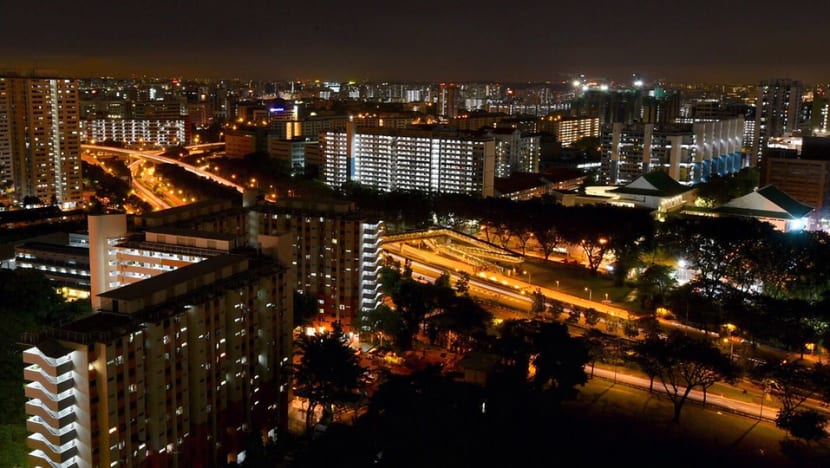Measures to enhance Singapore’s energy security extended to Jun 30 amid global volatility

A view of HDB flats at night. (File photo: Xabryna Kek)
SINGAPORE: Measures put into place to enhance Singapore’s energy security will be extended to the end of June, the Energy Market Authority (EMA) announced on Thursday (Mar 30).
These extensions are in light of the global energy crunch and the conflict in Ukraine, EMA said.
“Global gas prices had increased significantly due to high demand and tight gas supply. The conflict in Ukraine has further exacerbated the risk of disruptions in gas and oil,” the agency said.
As around 95 per cent of Singapore's electricity is generated from imported natural gas, consumers cannot be shielded from the global volatility and higher energy prices, it added.
“EMA will monitor the situation and consider extending the measures further if necessary, depending on the global energy situation and its impact on Singapore.”
First introduced in October last year, these measures include the establishment of a standby LNG facility which generation companies (gencos) can draw from to generate electricity when their natural gas supplies are disrupted.
Gencos have also been directed to maintain sufficient fuel for power generation, based on their available generation capacity, in addition to the existing requirement for fuel reserves that they are required to maintain under their licences.
Meanwhile, modified rules enable EMA to direct gencos to generate electricity using the gas from the standby LNG facility preemptively, if there are potential shortages in energy supply in the Singapore Wholesale Electricity Market, to maintain power system security and reliability.
These moves have helped ensure sufficient fuel and electricity supply, said EMA.
The authority added that such measures have also stabilised the Uniform Singapore Energy Price to around the cost of electricity production – an average of S$350 per megawatt-hour (MWh) in the first quarter of this year, compared to an average of S$460 per MWh in the fourth quarter of 2021.
The Temporary Electricity Contracting Support Scheme (TRECS) - which allows gencos to draw on EMA’s standby fuel facility to generate electricity - will also be extended to the end of June, said EMA.
This has helped large consumers such as businesses - with an average monthly consumption of at least 4MWh - secure fixed price plans and retail contracts with significant fixed price component.
“Thus far, participating gencos and retailers have been providing sufficient supply under TRECS to meet demand, on a voluntary basis,” said EMA.
EMA noted it has also worked with Sembcorp Power and Keppel Electric to offer long-term fixed price plans for business consumers with an average monthly consumption from 4MWh to 50MWh.
These plans range from six months to three years, with the fixed electricity rate for two-year and three-year plans priced at 25 cents per KWh, excluding third-party charges such as transmission charges and market charges.
Eligible consumers who wish to have greater price certainty can consider signing up for these fixed price plans, said EMA.
It added that the authorities recognise the cost pressures faced by households and businesses.
EMA noted that the Household Support Package introduced in Budget 2022 will help eligible households defray the costs of higher electricity bills, while businesses requiring financing support can tap on loan programmes offered by Enterprise Singapore.
Urging consumers to do their part to conserve energy, EMA pointed to the National Environment Agency’s (NEA) Energy Efficiency Fund, which helps eligible firms defray the cost of adopting energy-efficiency technologies.
Meanwhile, those living in one-room to three-room Housing Board flats can receive e-vouchers under the Climate Friendly Households Programme by NEA and PUB to offset the cost of purchasing water-efficient and energy-efficient household products, it said.

















